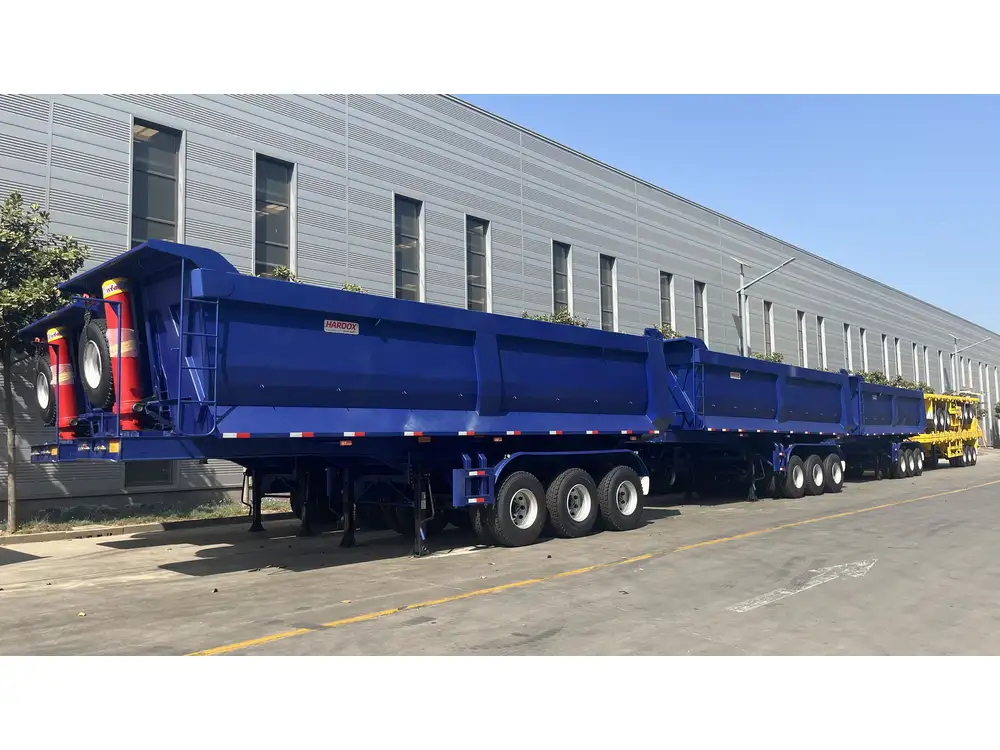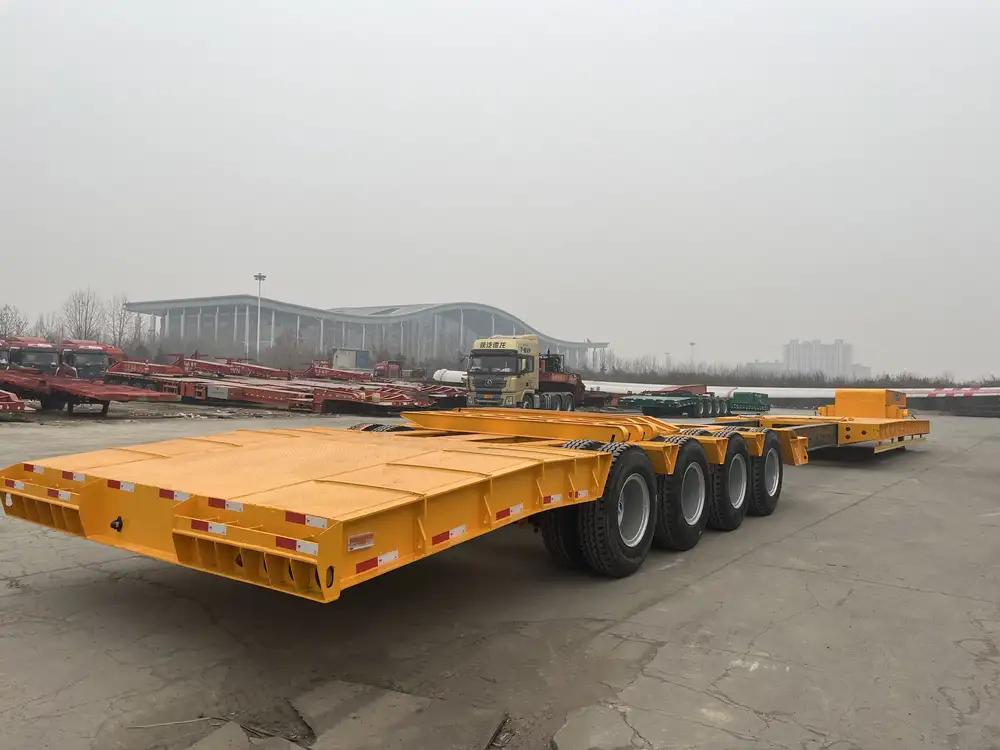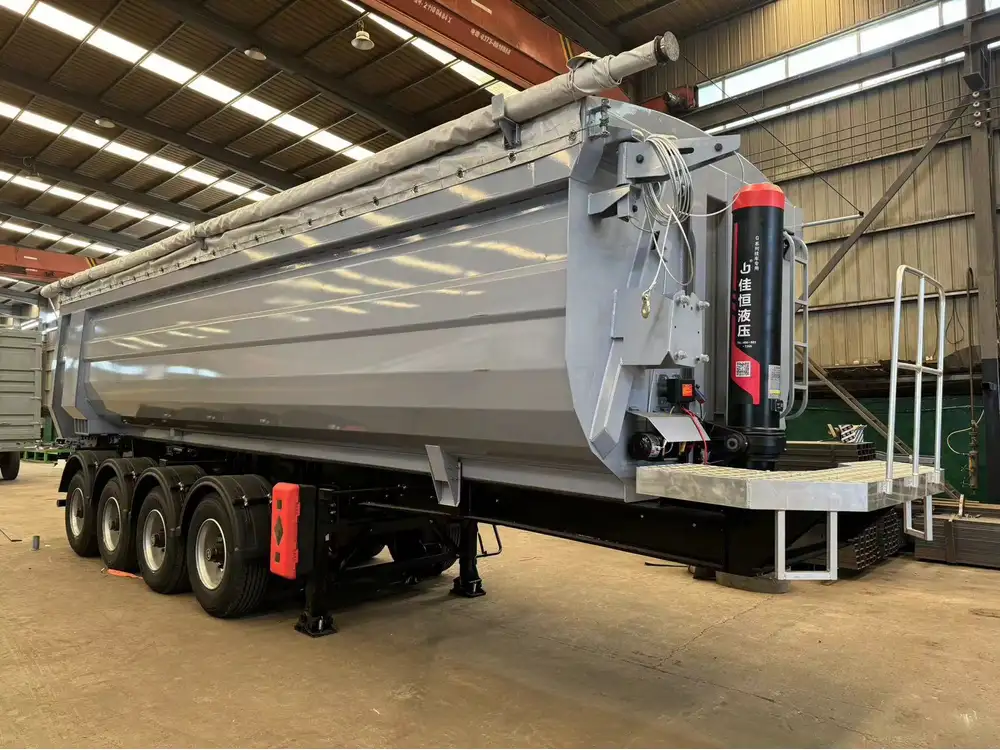Dump trailers are indispensable tools in the transportation and construction industries, facilitating the movement of various materials with efficiency and precision. However, to maximize their operational effectiveness, it’s crucial to understand how to adjust their speed. Adjusting the speed of a dump trailer not only improves its functionality but also enhances user safety and equipment longevity. This guide aims to equip users with all the necessary insights and step-by-step instructions essential for effectively adjusting the speed on a dump trailer.
Understanding Dump Trailer Speed Mechanisms
Hydraulic Systems
Dump trailers typically utilize hydraulic systems for their lifting and lowering mechanisms. The speed adjustment in these systems is attributed to the rate at which hydraulic fluid is allowed to enter and exit the cylinder, which in turn affects how quickly the dump trailer operates.

Key Components:
- Hydraulic Pump: Responsible for generating flow.
- Control Valve: Regulates the flow of hydraulic fluid.
- Hydraulic Cylinder: The actuator that raises and lowers the trailer bed.
Factors Affecting Speed Adjustment
Hydraulic Fluid Type and Viscosity: The type and viscosity of the hydraulic fluid can significantly impact performance. Thicker fluids may lead to slower operation speeds.
Environmental Conditions: Temperature variations can affect hydraulic fluid viscosity. Colder temperatures can thicken the fluid, resulting in slower trailer movement.
Weight of the Load: Heavier loads require a more gradual speed adjustment to ensure safety and stability, introducing a factor of operational variance.
Trailer Design: Different models exhibit distinct operational characteristics that can influence speed capabilities.
Step-by-Step Guide to Adjusting Speed on a Dump Trailer

Step 1: Safety First
Before making any adjustments, ensure that all safety precautions are taken. This includes:
- Chocking Wheels: Prevents accidental movement during adjustments.
- Wearing Safety Gear: Safety glasses and gloves should be worn to protect against potential accidents.
Step 2: Understand Your Control System
Different dump trailers utilize various control systems to manage speed. These can be categorized mainly into:
- Manual Control Valves: Levers or knobs that directly influence hydraulic flow by manipulating a mechanical valve.
- Electric Control Systems: Automated systems that may feature adjustable speed settings.
Step 3: Locate the Control Valve
The control valve is typically located near the hydraulic pump. It may have a series of knobs or levers that allow for the adjustment of hydraulic fluid release.

Step 4: Adjustment Procedure
For Manual Control Valves:
Identify the Speed Adjustment Dial/Knob: This is often marked with speed indicators or flow ratings.
Turn Adjustments Slowly: Gradually adjust the dial clockwise to increase speed or counter-clockwise to reduce speed. It’s crucial to make small adjustments to prevent abrupt changes.
Test the Adjustment: With the bed of the trailer unloaded, initiate a lift operation and observe the speed. Repeat adjustments as necessary.
For Electric Control Systems:
Access the Control Panel: Locate the main control panel.
Digital Display: If available, you may notice a speed setting option; adjust this according to your requirements.
Calibration: Some systems may allow for fine-tuning; consult your manufacturer’s manual for specific calibration procedures.
Test Functionality: Just like with manual systems, conduct a test lift and adjust as necessary until the desired speed is achieved.

Step 5: Maintenance Checks
Regular checks of your hydraulic system can prevent performance issues related to speed adjustment. Key maintenance tasks include:
- Inspecting Hydraulic Hoses: Look for wear and potential leaks.
- Changing Hydraulic Fluid: Regularly replace old fluid with quality approved types for optimal performance.
Troubleshooting Common Speed-Related Problems
Issue 1: Slow Speed
Potential Causes:
- Low hydraulic fluid levels.
- Viscosity problems associated with the fluid.
- Blocked filters or lines.
Solution: Check fluid levels, replace old fluid, and clean filters/lines to restore optimal flow.

Issue 2: Erratic Speed
Potential Causes:
- Air bubbles in the hydraulic system.
- Faulty control valve.
Solution: Bleed the hydraulic system to remove air. Inspect or replace valves as necessary.
Issue 3: Unresponsive Controls
Potential Causes:
- Electrical issues (for electric systems).
- Control valve failure.
Solution: Check electrical connections, fuses, and control systems. For manual valves, inspect for physical damage or jams.
Comparison of Speed Adjustment Techniques
| Technique | Pros | Cons |
|---|---|---|
| Manual Control | Direct control, intuitive | Requires physical effort, potential for human error |
| Electric Control | Automated adjustments, precision | Higher initial cost, reliance on electrical systems |
| Variable Flow Valves | Allows gradual speed changes | Requires understanding of hydraulic principles |

Frequently Asked Questions
1. What is the ideal speed for a dump trailer?
The ideal speed varies depending on the load and the specific task. Generally, a controlled and steady speed is recommended, focusing on safety and stability over rapid operation.
2. Can I adjust my dump trailer’s speed while it is loaded?
While adjustments can be made, it is advisable to adjust speeds with the trailer empty to ensure safety. Unload prior to adjustments to prevent accidents.

3. What types of hydraulic fluid should I use?
Always refer to the manufacturer’s guidelines for recommended hydraulic fluid types and specifications to ensure compatibility and optimum performance.
4. How often should I perform maintenance on my dump trailer?
Routine inspections should be conducted monthly, with fluid changes and deeper mechanical checks done annually or according to usage intensity.
Conclusion
Adjusting the speed on a dump trailer is not merely a matter of preference but an essential skill that can affect the safety, efficiency, and longevity of your equipment. By understanding the mechanisms behind speed adjustment, following systematic procedures, and embracing regular maintenance, owners can ensure effective operation tailored to their needs.
This profound knowledge empowers users not only to navigate common challenges but also to embrace optimum practices that safeguard equipment while fulfilling operational tasks efficiently.
In summary, whether you’re navigating through construction sites or managing waste disposal, mastering the speed adjustment on dump trailers creates a smoother operational flow, enhances safety, and guarantees the durability of your investment. Explore your trailer’s capabilities today and implement these strategies for a superior loading and unloading experience.



